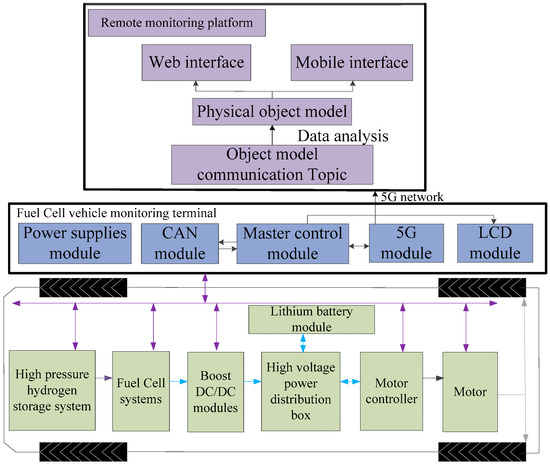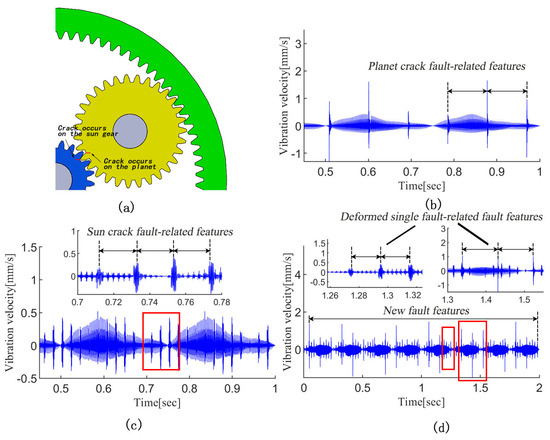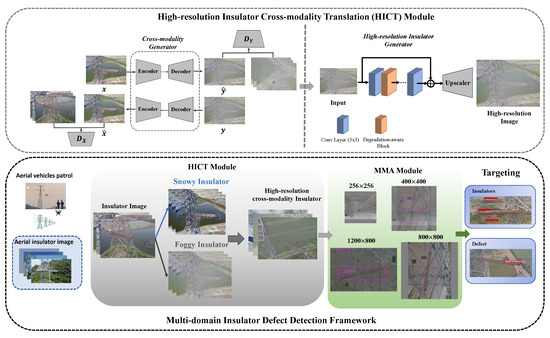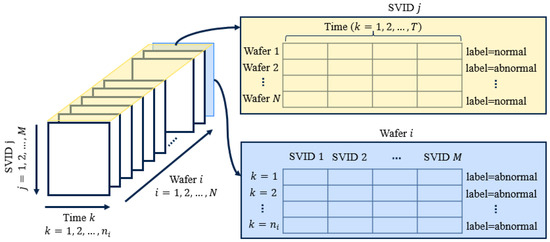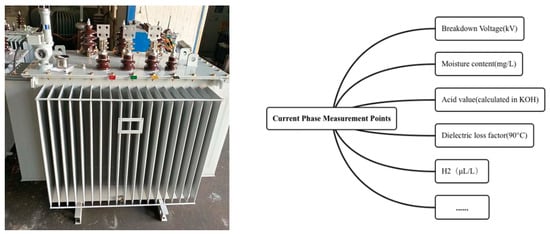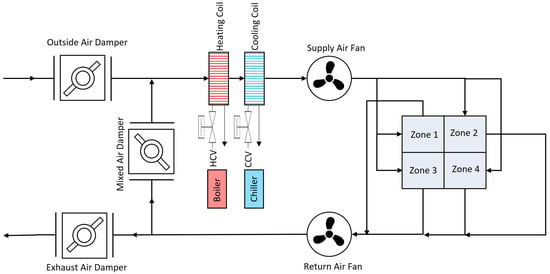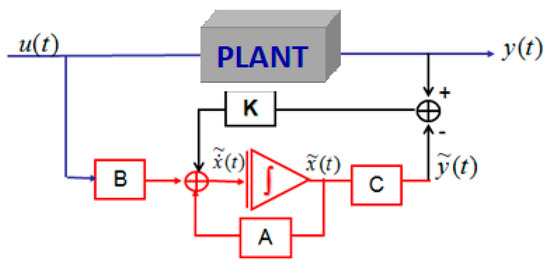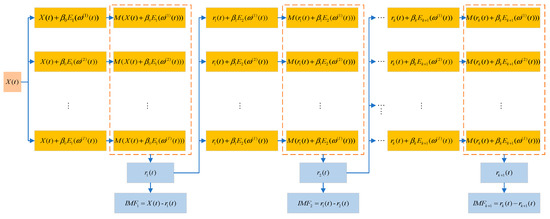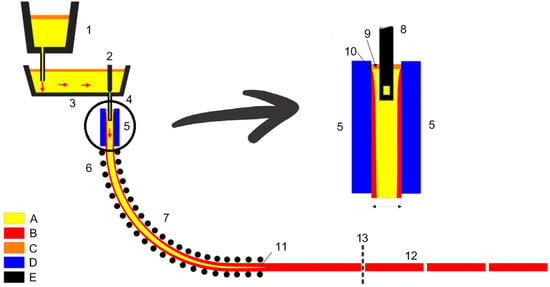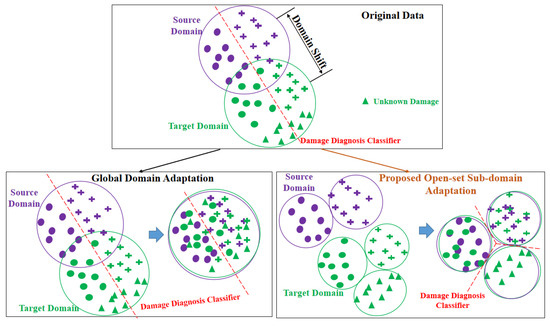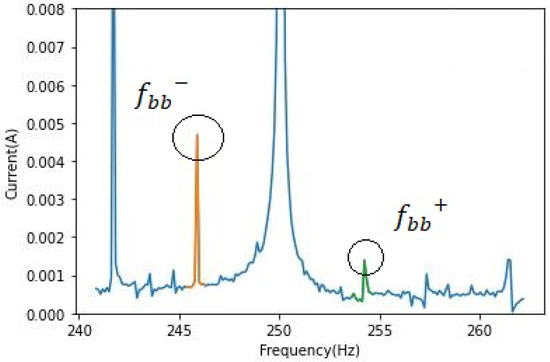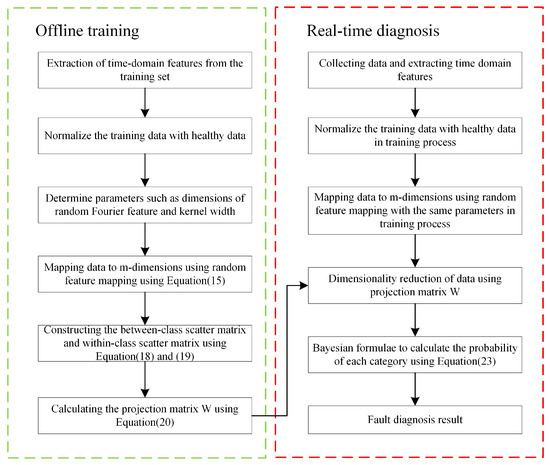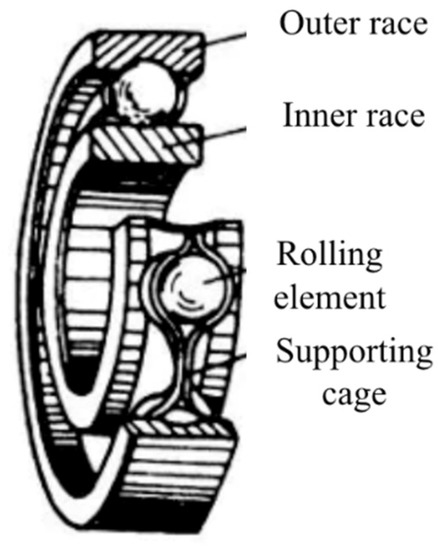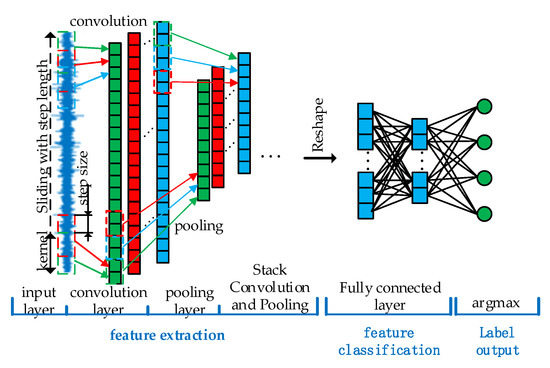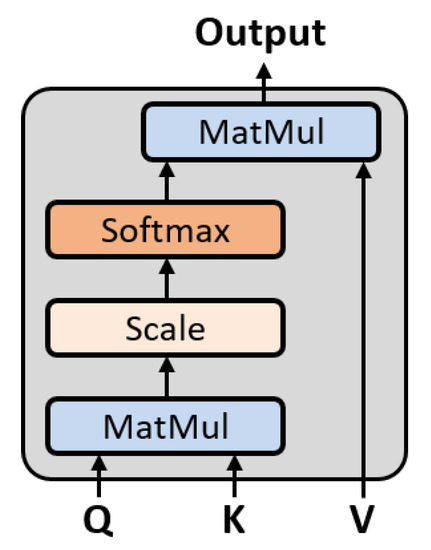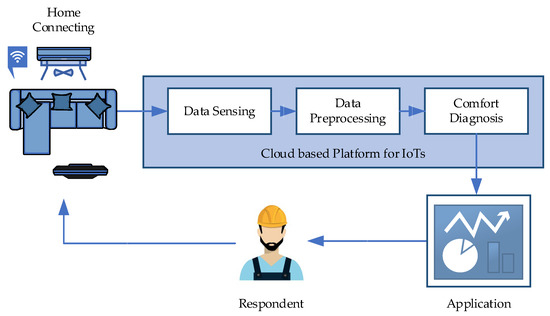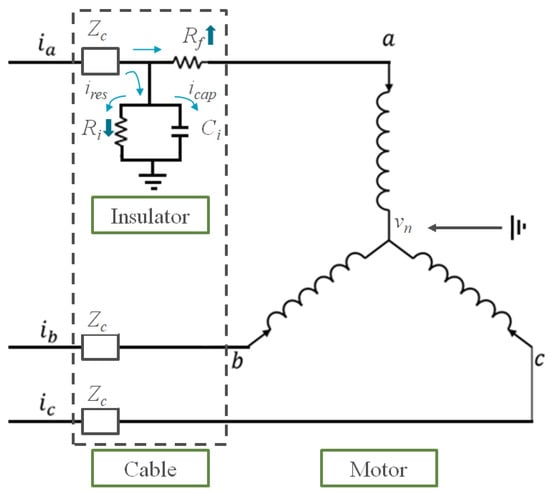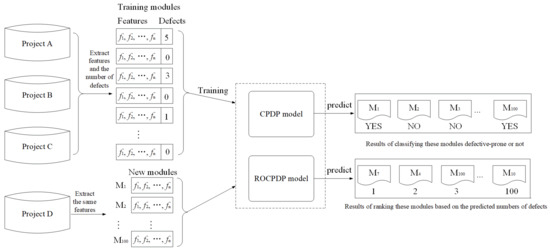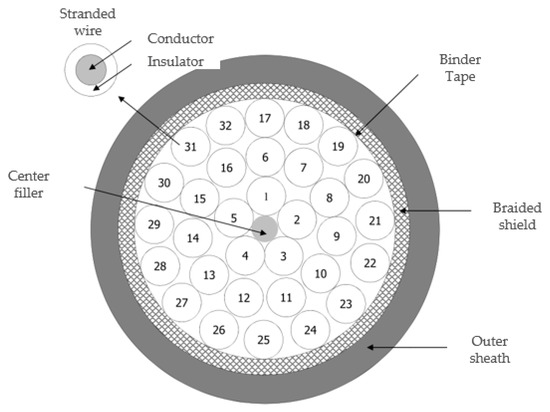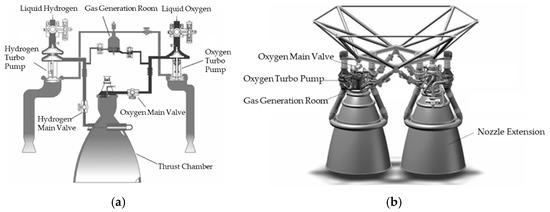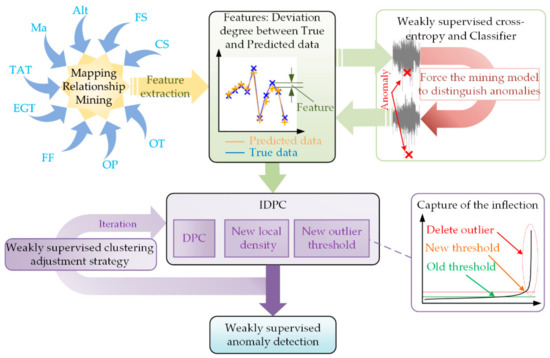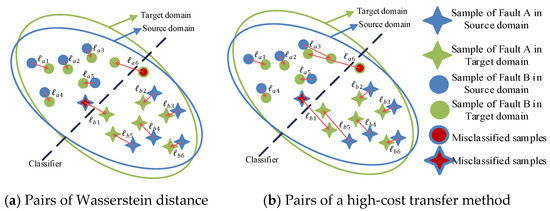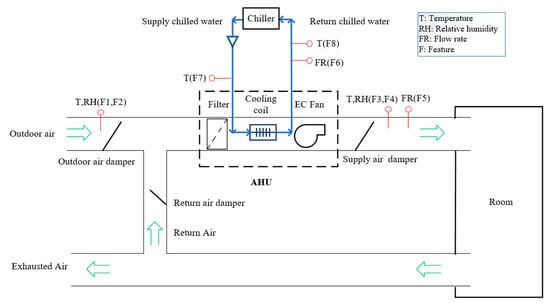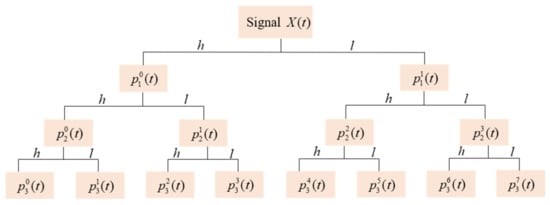Artificial Intelligence for Data-Driven Fault Detection and Diagnosis
(Closed)
Share This Topical Collection
Editors
 Dr. Kim Phuc Tran
Dr. Kim Phuc Tran
 Dr. Kim Phuc Tran
Dr. Kim Phuc Tran
E-Mail
Website
Collection Editor
Department of Automation and Industrial Informatics, ENSAIT & GEMTEX, University of Lille, 2 allée Louise et Victor Champier, 59056 Roubaix, France
Interests: Internet of Things; web sites; clothing; computer network
security; condition monitoring; data analysis; data description; data mining; industrial control; learning (artificial intelligence); natural language processing; production engineering computing; support vector machines; telecommunication computing; text analysis; wireless sensor networks
Special Issues, Collections and Topics in MDPI journals
 Dr. Athanasios Rakitzis
Dr. Athanasios Rakitzis
 Dr. Athanasios Rakitzis
Dr. Athanasios Rakitzis
E-Mail
Website
Collection Editor
Department of Statistics and Insurance Science, University of Piraeus, Karoli & Dimitriou 80, 18534 Piraeus, Greece
Interests: Statistical process monitoring; statistical quality control; biosurveillance; theory and applications of run and scan statistics; integer-valued time series modelling
 Dr. Khanh T. P. Nguyen
Dr. Khanh T. P. Nguyen
 Dr. Khanh T. P. Nguyen
Dr. Khanh T. P. Nguyen
E-Mail
Website
Collection Editor
The Production Engineering Laboratory, École nationale d'Ingénieurs de Tarbes, 65016 Tarbes, France
Interests: Prognostics and Health Management; Fault Detection; Diagnostic; Prognostic; Predictive Maintenance; Artificial Intelligent; Machine Learning; Deep Learning; Reinforcement Learning
Topical Collection Information
Dear Colleagues,
The recent development of information and communication technologies has engendered the concept of the smart factory that adds intelligence into the manufacturing process to drive continuous improvement, knowledge transfer, and data-based decision making. Fault detection recognizes the appearance of a fault in the system, and fault diagnosis categorizes the fault, which provides supports to find the category, location, and scale of the fault. Fault Detection and Diagnosis has long been recognized as one of the important aspects of improving the reliability of industrial process systems. With the development of Artificial Intelligence algorithms and IoTs solutions and sensors, the reliability of automatic Fault Detection and Diagnosis is ever-increasing.
The aim of this Topical Collection is to highlight innovative developments with respect to the current challenges and opportunities for the applications of Artificial Intelligence for Fault Detection and Diagnosis. Topics include but are not limited to:
- Real-time Fault Detection and Diagnosis with Machine Learning and Deep Learning
- IoT-enabled predictive maintenance
- IoT and Edge Computing-based Condition Monitoring
- Anomaly Detection for Fault Detection and Diagnosis
- Fault Diagnosis in multivariate control charts
- Data Mining approaches for Fault Detection and Diagnosis
Dr. Kim Phuc Tran
Dr. Athanasios Rakitzis
Dr. Khanh T. P. Nguyen
Collection Editors
Manuscript Submission Information
Manuscripts should be submitted online at www.mdpi.com by registering and logging in to this website. Once you are registered, click here to go to the submission form. Manuscripts can be submitted until the deadline. All submissions that pass pre-check are peer-reviewed. Accepted papers will be published continuously in the journal (as soon as accepted) and will be listed together on the collection website. Research articles, review articles as well as short communications are invited. For planned papers, a title and short abstract (about 100 words) can be sent to the Editorial Office for announcement on this website.
Submitted manuscripts should not have been published previously, nor be under consideration for publication elsewhere (except conference proceedings papers). All manuscripts are thoroughly refereed through a single-blind peer-review process. A guide for authors and other relevant information for submission of manuscripts is available on the Instructions for Authors page. Sensors is an international peer-reviewed open access semimonthly journal published by MDPI.
Please visit the Instructions for Authors page before submitting a manuscript.
The Article Processing Charge (APC) for publication in this open access journal is 2600 CHF (Swiss Francs).
Submitted papers should be well formatted and use good English. Authors may use MDPI's
English editing service prior to publication or during author revisions.
Published Papers (34 papers)
Open AccessArticle
The Fault Diagnosis of Rolling Bearings Is Conducted by Employing a Dual-Branch Convolutional Capsule Neural Network
by
Wanjie Lu, Jieyu Liu and Fanhao Lin
Viewed by 933
Abstract
Currently, many fault diagnosis methods for rolling bearings based on deep learning are facing two main challenges. Firstly, the deep learning model exhibits poor diagnostic performance and limited generalization ability in the presence of noise signals and varying loads. Secondly, there is incomplete
[...] Read more.
Currently, many fault diagnosis methods for rolling bearings based on deep learning are facing two main challenges. Firstly, the deep learning model exhibits poor diagnostic performance and limited generalization ability in the presence of noise signals and varying loads. Secondly, there is incomplete utilization of fault information and inadequate extraction of fault features, leading to the low diagnostic accuracy of the model. To address these problems, this paper proposes an improved dual-branch convolutional capsule neural network for rolling bearing fault diagnosis. This method converts the collected bearing vibration signals into grayscale images to construct a grayscale image dataset. By fully considering the types of bearing faults and damage diameters, the data are labeled using a dual-label format. A multi-scale convolution module is introduced to extract features from the data and maximize feature information extraction. Additionally, a coordinate attention mechanism is incorporated into this module to better extract useful channel features and enhance feature extraction capability. Based on adaptive fusion between fault type (damage diameter) features and labels, a dual-branch convolutional capsule neural network model for rolling bearing fault diagnosis is established. The model was experimentally validated using both Case Western Reserve University’s bearing dataset and self-made datasets. The experimental results demonstrate that the fault type branch of the model achieves an accuracy rate of 99.88%, while the damage diameter branch attains an accuracy rate of 99.72%. Both branches exhibit excellent classification performance and display robustness against noise interference and variable working conditions. In comparison with other algorithm models cited in the reference literature, the diagnostic capability of the model proposed in this study surpasses them. Furthermore, the generalization ability of the model is validated using a self-constructed laboratory dataset, yielding an average accuracy rate of 94.25% for both branches.
Full article
►▼
Show Figures
Open AccessArticle
Investigating a Machine Learning Approach to Predicting White Pixel Defects in Wafers—A Case Study of Wafer Fabrication Plant F
by
Dong-Her Shih, Cheng-Yu Yang, Ting-Wei Wu and Ming-Hung Shih
Viewed by 1065
Abstract
CMOS image sensor (CIS) semiconductor products are integral to mobile phones and photographic devices, necessitating ongoing enhancements in efficiency and quality for superior photographic outcomes. The presence of white pixels serves as a crucial metric for assessing CIS product performance, primarily arising from
[...] Read more.
CMOS image sensor (CIS) semiconductor products are integral to mobile phones and photographic devices, necessitating ongoing enhancements in efficiency and quality for superior photographic outcomes. The presence of white pixels serves as a crucial metric for assessing CIS product performance, primarily arising from metal impurity contamination during the wafer production process or from defects introduced by the grinding blade process. While immediately addressing metal impurity contamination during production presents challenges, refining the handling of defects attributed to grinding blade processing can notably mitigate white pixel issues in CIS products. This study zeroes in on silicon wafer manufacturers in Taiwan, analyzing white pixel defects reported by customers and leveraging machine learning to pinpoint and predict key factors leading to white pixel defects from grinding blade operations. Such pioneering practical studies are rare. The findings reveal that the classification and regression tree (CART) and random forest (RF) models deliver the most accurate predictions (95.18%) of white pixel defects caused by grinding blade operations in a default parameter setting. The analysis further elucidates critical factors like grinding load and torque, vital for the genesis of white pixel defects. The insights garnered from this study aim to arm operators with proactive measures to diminish the potential for customer complaints.
Full article
►▼
Show Figures
Open AccessArticle
Remote Fault Diagnosis for the Powertrain System of Fuel Cell Vehicles Based on Random Forest Optimized with a Genetic Algorithm
by
Rui Quan, Jian Zhang and Zixiang Feng
Viewed by 1277
Abstract
To enhance the safety and reliability of fuel cell vehicles, a remote monitoring system based on 5th generation (5G) mobile networks and controller area networks (CANs) was designed, and a random forest (RF) algorithm for the fault diagnosis for eight typical malfunctions of
[...] Read more.
To enhance the safety and reliability of fuel cell vehicles, a remote monitoring system based on 5th generation (5G) mobile networks and controller area networks (CANs) was designed, and a random forest (RF) algorithm for the fault diagnosis for eight typical malfunctions of its powertrain system was incorporated. Firstly, the information on the powertrain system was obtained through a 5G-based monitoring terminal, and the Alibaba Cloud IoT platform was utilized for data storage and remote monitoring. Secondly, a fault diagnosis model based on the RF algorithm was constructed for fault classification; its parameters were optimized with a genetic algorithm (GA), and it was applied on the Alibaba Cloud PAI platform. Finally, the performance of the proposed RF fault diagnosis model was evaluated by comparing it with three other classification models: random search conditioning, grid search conditioning, and Bayesian optimization. Results show that the model
accuracy,
F1 score, and
kappa value of the optimized RF fault classification model are higher than the other three. The model achieves an
F1 value of 97.77% in identifying multiple typical faults of the powertrain system, as validated by vehicle malfunction data. The method demonstrates the feasibility of remote monitoring and fault diagnosis for the powertrain system of fuel cell vehicles.
Full article
►▼
Show Figures
Open AccessArticle
Compound Fault Diagnosis of Planetary Gearbox Based on Improved LTSS-BoW Model and Capsule Network
by
Guoyan Li, Liyu He, Yulin Ren, Xiong Li, Jingbin Zhang and Runjun Liu
Cited by 3 | Viewed by 1092
Abstract
The identification of compound fault components of a planetary gearbox is especially important for keeping the mechanical equipment working safely. However, the recognition performance of existing deep learning-based methods is limited by insufficient compound fault samples and single label classification principles. To solve
[...] Read more.
The identification of compound fault components of a planetary gearbox is especially important for keeping the mechanical equipment working safely. However, the recognition performance of existing deep learning-based methods is limited by insufficient compound fault samples and single label classification principles. To solve the issue, a capsule neural network with an improved feature extractor, named LTSS-BoW-CapsNet, is proposed for the intelligent recognition of compound fault components. Firstly, a feature extractor is constructed to extract fault feature vectors from raw signals, which is based on local temporal self-similarity coupled with bag-of-words models (LTSS-BoW). Then, a multi-label classifier based on a capsule network (CapsNet) is designed, in which the dynamic routing algorithm and average threshold are adopted. The effectiveness of the proposed LTSS-BoW-CapsNet method is validated by processing three compound fault diagnosis tasks. The experimental results demonstrate that our method can via decoupling effectively identify the multi-fault components of different compound fault patterns. The testing accuracy is more than 97%, which is better than the other four traditional classification models.
Full article
►▼
Show Figures
Open AccessArticle
Efficient Cross-Modality Insulator Augmentation for Multi-Domain Insulator Defect Detection in UAV Images
by
Yue Liu and Xinbo Huang
Cited by 3 | Viewed by 1178
Abstract
Regular inspection of the insulator operating status is essential to ensure the safe and stable operation of the power system. Unmanned aerial vehicle (UAV) inspection has played an important role in transmission line inspection, replacing former manual inspection. With the development of deep
[...] Read more.
Regular inspection of the insulator operating status is essential to ensure the safe and stable operation of the power system. Unmanned aerial vehicle (UAV) inspection has played an important role in transmission line inspection, replacing former manual inspection. With the development of deep learning technologies, deep learning-based insulator defect detection methods have drawn more and more attention and gained great improvement. However, former insulator defect detection methods mostly focus on designing complex refined network architecture, which will increase inference complexity in real applications. In this paper, we propose a novel efficient cross-modality insulator augmentation algorithm for multi-domain insulator defect detection to mimic real complex scenarios. It also alleviates the overfitting problem without adding the inference resources. The high-resolution insulator cross-modality translation (HICT) module is designed to generate multi-modality insulator images with rich texture information to eliminate the adverse effects of existing modality discrepancy. We propose the multi-domain insulator multi-scale spatial augmentation (MMA) module to simultaneously augment multi-domain insulator images with different spatial scales and leverage these fused images and location information to help the target model locate defects with various scales more accurately. Experimental results prove that the proposed cross-modality insulator augmentation algorithm can achieve superior performance in public UPID and SFID insulator defect datasets. Moreover, the proposed algorithm also gives a new perspective for improving insulator defect detection precision without adding inference resources, which is of great significance for advancing the detection of transmission lines.
Full article
►▼
Show Figures
Open AccessArticle
Application of 1D ResNet for Multivariate Fault Detection on Semiconductor Manufacturing Equipment
by
Philip Tchatchoua, Guillaume Graton, Mustapha Ouladsine and Jean-François Christaud
Cited by 4 | Viewed by 1975
Abstract
Amid the ongoing emphasis on reducing manufacturing costs and enhancing productivity, one of the crucial objectives when manufacturing is to maintain process tools in optimal operating conditions. With advancements in sensing technologies, large amounts of data are collected during manufacturing processes, and the
[...] Read more.
Amid the ongoing emphasis on reducing manufacturing costs and enhancing productivity, one of the crucial objectives when manufacturing is to maintain process tools in optimal operating conditions. With advancements in sensing technologies, large amounts of data are collected during manufacturing processes, and the challenge today is to utilize these massive data efficiently. Some of these data are used for fault detection and classification (FDC) to evaluate the general condition of production machinery. The distinctive characteristics of semiconductor manufacturing, such as interdependent parameters, fluctuating behaviors over time, and frequently changing operating conditions, pose a major challenge in identifying defective wafers during the manufacturing process. To address this challenge, a multivariate fault detection method based on a 1D ResNet algorithm is introduced in this study. The aim is to identify anomalous wafers by analyzing the raw time-series data collected from multiple sensors throughout the semiconductor manufacturing process. To achieve this objective, a set of features is chosen from specified tools in the process chain to characterize the status of the wafers. Tests on the available data confirm that the gradient vanishing problem faced by very deep networks starts to occur with the plain 1D Convolutional Neural Network (CNN)-based method when the size of the network is deeper than 11 layers. To address this, a 1D Residual Network (ResNet)-based method is used. The experimental results show that the proposed method works more effectively and accurately compared to techniques using a plain 1D CNN and can thus be used for detecting abnormal wafers in the semiconductor manufacturing industry.
Full article
►▼
Show Figures
Open AccessArticle
Improved RAkEL’s Fault Diagnosis Method for High-Speed Train Traction Transformer
by
Man Li, Xinyi Zhou, Siyao Qin, Ziyan Bin and Yanhui Wang
Viewed by 1438
Abstract
The traction system is very important to ensure the safe operation of high-speed trains, and the failure of the traction transformer is the most likely fault in the traction system. Fault diagnosis in actual work relies largely on manual experience. This paper proposes
[...] Read more.
The traction system is very important to ensure the safe operation of high-speed trains, and the failure of the traction transformer is the most likely fault in the traction system. Fault diagnosis in actual work relies largely on manual experience. This paper proposes an improved RAkEL (Random
k-Labelsets) algorithm for the fault diagnosis of high-speed train traction transformers. Firstly, this article starts from the large amount of “sleeping” fault maintenance data accumulated by the railway department, takes a single maintenance record as an instance, uses specific monitoring values to construct an instance vector, and uses the fault phenomena corresponding to the monitoring indicators as labels. Then, this paper improves the step of selecting
k-labelsets in RAkEL, and extracts associated faults using the Relief algorithm. Finally, this paper excavates and uses the association rules between data and faults to identify traction transformer faults. The results showed that the improved RAkEL diagnostic method had a significant improvement in the evaluation indicators. Compared with other multi-label classification algorithms, including BR (Binary Relevance) and CLR (Calibrated Label Ranking), this method performs well on multiple evaluation indicators. It can further help engineers perform timely maintenance work in the future.
Full article
►▼
Show Figures
Open AccessArticle
Semi-Supervised Anomaly Detection of Dissolved Oxygen Sensor in Wastewater Treatment Plants
by
Liliana Maria Ghinea, Mihaela Miron and Marian Barbu
Cited by 4 | Viewed by 1732
Abstract
As the world progresses toward a digitally connected and sustainable future, the integration of semi-supervised anomaly detection in wastewater treatment processes (WWTPs) promises to become an essential tool in preserving water resources and assuring the continuous effectiveness of plants. When these complex and
[...] Read more.
As the world progresses toward a digitally connected and sustainable future, the integration of semi-supervised anomaly detection in wastewater treatment processes (WWTPs) promises to become an essential tool in preserving water resources and assuring the continuous effectiveness of plants. When these complex and dynamic systems are coupled with limited historical anomaly data or complex anomalies, it is crucial to have powerful tools capable of detecting subtle deviations from normal behavior to enable the early detection of equipment malfunctions. To address this challenge, in this study, we analyzed five semi-supervised machine learning techniques (SSLs) such as Isolation Forest (IF), Local Outlier Factor (LOF), One-Class Support Vector Machine (OCSVM), Multilayer Perceptron Autoencoder (MLP-AE), and Convolutional Autoencoder (Conv-AE) for detecting different anomalies (complete, concurrent, and complex) of the Dissolved Oxygen (DO) sensor and aeration valve in the WWTP. The best results are obtained in the case of Conv-AE algorithm, with an accuracy of 98.36 for complete faults, 97.81% for concurrent faults, and 98.64% for complex faults (a combination of incipient and concurrent faults). Additionally, we developed an anomaly detection system for the most effective semi-supervised technique, which can provide the detection of delay time and generate a fault alarm for each considered anomaly.
Full article
►▼
Show Figures
Open AccessArticle
Gas Sensor Array Fault Diagnosis Based on Multi-Dimensional Fusion, an Attention Mechanism, and Multi-Task Learning
by
Pengyu Huang, Qingfeng Wang, Haotian Chen and Geyu Lu
Cited by 2 | Viewed by 1798
Abstract
With the development of gas sensor arrays and computational technology, machine olfactory systems have been widely used in environmental monitoring, medical diagnosis, and other fields. The reliable and stable operation of gas sensing systems depends heavily on the accuracy of the sensors outputs.
[...] Read more.
With the development of gas sensor arrays and computational technology, machine olfactory systems have been widely used in environmental monitoring, medical diagnosis, and other fields. The reliable and stable operation of gas sensing systems depends heavily on the accuracy of the sensors outputs. Therefore, the realization of accurate gas sensor array fault diagnosis is essential to monitor the working status of sensor arrays and ensure the normal operation of the whole system. The existing methods extract features from a single dimension and require the separate training of models for multiple diagnosis tasks, which limits diagnostic accuracy and efficiency. To address these limitations, for this study, a novel fault diagnosis network based on multi-dimensional feature fusion, an attention mechanism, and multi-task learning, MAM-Net, was developed and applied to gas sensor arrays. First, feature fusion models were applied to extract deep and comprehensive features from the original data in multiple dimensions. A residual network equipped with convolutional block attention modules and a Bi-LSTM network were designed for two-dimensional and one-dimensional signals to capture spatial and temporal features simultaneously. Subsequently, a concatenation layer was constructed using feature stitching to integrate the fault details of different dimensions and avoid ignoring useful information. Finally, a multi-task learning module was designed for the parallel learning of the sensor fault diagnosis to effectively improve the diagnosis capability. The experimental results derived from using the proposed framework on gas sensor datasets across different amounts of data, balanced and unbalanced datasets, and different experimental settings show that the proposed framework outperforms the other available methods and demonstrates good recognition accuracy and robustness.
Full article
►▼
Show Figures
Open AccessArticle
Advancing Fault Detection in HVAC Systems: Unifying Gramian Angular Field and 2D Deep Convolutional Neural Networks for Enhanced Performance
by
Wunna Tun, Kwok-Wai (Johnny) Wong and Sai-Ho Ling
Cited by 3 | Viewed by 2063
Abstract
Efficiency and comfort in buildings rely on on well-functioning HVAC systems. However, system faults can compromise performance. Modern data-driven fault detection methods, considering diverse techniques, encounter challenges in understanding intricate interactions and adapting to dynamic conditions present in HVAC systems during occupancy periods.
[...] Read more.
Efficiency and comfort in buildings rely on on well-functioning HVAC systems. However, system faults can compromise performance. Modern data-driven fault detection methods, considering diverse techniques, encounter challenges in understanding intricate interactions and adapting to dynamic conditions present in HVAC systems during occupancy periods. Implementing fault detection during active operation, which aligns with real-world scenarios and captures dynamic interactions and environmental changes, is considered highly valuable. To address this, utilizing the dynamic simulation system HVAC SIMulation PLUS (HVACSIM+), an HVAC fault model was developed using 194 sensor signals from each HVAC component within a single-story, four-room building. The advanced HVAC fault detection framework, leveraging simulated HVAC operational scenarios with the Gramian angular field (GAF) and two-dimensional convolutional neural networks (GAF-2DCNNs), offers a robust and proactive solution. By utilizing the GAF capacity to convert time-series sensor data into informative 2D images, integrated with 2DCNN for automated feature extraction, hidden temporal relationships within 1D signals are captured. After training on nine significant HVAC faults and normal conditions during occupancy, the effectiveness of the proposed GAF-2DCNN is evaluated through comparisons with support vector machine (SVM), random forest (RF), and hybrid RF-SVM, one-dimensional convolutional neural networks (1D-CNNs). The results demonstrates an impressive overall accuracy of 97%, accompanied by precision, recall, and F1 scores that surpass 90% for individual HVAC faults. Through the introduction of the unified approach that integrates HVACSIM+ simulated data and GAF-2DCNN, a notable enhancement in robustness and reliability for handling substantial HVAC faults is achieved.
Full article
►▼
Show Figures
Open AccessArticle
Masked Graph Neural Networks for Unsupervised Anomaly Detection in Multivariate Time Series
by
Kang Xu, Yuan Li, Yixuan Li, Liyan Xu, Ruiyao Li and Zhenjiang Dong
Cited by 4 | Viewed by 3095
Abstract
Anomaly detection has been widely used in grid operation and maintenance, machine fault detection, and so on. In these applications, the multivariate time-series data from multiple sensors with latent relationships are always high-dimensional, which makes multivariate time-series anomaly detection particularly challenging. In existing
[...] Read more.
Anomaly detection has been widely used in grid operation and maintenance, machine fault detection, and so on. In these applications, the multivariate time-series data from multiple sensors with latent relationships are always high-dimensional, which makes multivariate time-series anomaly detection particularly challenging. In existing unsupervised anomaly detection methods for multivariate time series, it is difficult to capture the complex associations among multiple sensors. Graph neural networks (GNNs) can model complex relations in the form of a graph, but the observed time-series data from multiple sensors lack explicit graph structures. GNNs cannot automatically learn the complex correlations in the multivariate time-series data or make good use of the latent relationships among time-series data. In this paper, we propose a new method—masked graph neural networks for unsupervised anomaly detection (MGUAD). MGUAD can learn the structure of the unobserved causality among sensors to detect anomalies. To robustly learn the temporal context from adjacent time points of time-series data from the same sensor, MGUAD randomly masks some points of the time-series data from the sensor and reconstructs the masked time points. Similarly, to robustly learn the graph-level context from adjacent nodes or edges in the relation graph of multivariate time series, MGUAD masks some nodes or edges in the graph under the framework of a GNN. Comprehensive experiments are conducted on three public datasets. According to the experimental findings, MGUAD outperforms state-of-the-art anomaly detection methods.
Full article
►▼
Show Figures
Open AccessArticle
Investigating Machine Learning and Control Theory Approaches for Process Fault Detection: A Comparative Study of KPCA and the Observer-Based Method
by
Fatma Lajmi, Lotfi Mhamdi, Wiem Abdelbaki, Hedi Dhouibi and Khaled Younes
Cited by 5 | Viewed by 1340
Abstract
The paper focuses on the importance of prompt and efficient process fault detection in contemporary manufacturing industries, where product quality and safety protocols are critical. The study compares the efficiencies of two techniques for process fault detection: Kernel Principal Component Analysis (KPCA) and
[...] Read more.
The paper focuses on the importance of prompt and efficient process fault detection in contemporary manufacturing industries, where product quality and safety protocols are critical. The study compares the efficiencies of two techniques for process fault detection: Kernel Principal Component Analysis (KPCA) and the observer method. Both techniques are applied to observe water volume variation within a hydraulic system comprising three tanks. PCA is an unsupervised learning technique used for dimensionality reduction and pattern recognition. It is an extension of Principal Component Analysis (PCA) that utilizes kernel functions to transform data into higher-dimensional spaces, where it becomes easier to separate classes or identify patterns. In this paper, KPCA is applied to detect faults in the hydraulic system by analyzing the variation in water volume. The observer method originates from control theory and is utilized to estimate the internal states of a system based on its output measurements. It is commonly used in control systems to estimate the unmeasurable or hidden states of a system, which is crucial for ensuring proper control and fault detection. In this study, the observer method is applied to the hydraulic system to estimate the water volume variations within the three tanks. The paper presents a comparative study of these two techniques applied to the hydraulic system. The results show that both KPCA and the observer method perform similarly in detecting faults within the system. This similarity in performance highlights the efficacy of these techniques and their potential adaptability in various fault diagnosis scenarios within modern manufacturing processes.
Full article
►▼
Show Figures
Open AccessArticle
Research on Denoising Method for Hydroelectric Unit Vibration Signal Based on ICEEMDAN–PE–SVD
by
Fangqing Zhang, Jiang Guo, Fang Yuan, Yongjie Shi and Zhaoyang Li
Cited by 6 | Viewed by 1473
Abstract
Vibration monitoring and analysis play a crucial role in the fault diagnosis of hydroelectric units. However, accurate extraction and identification of fault features from vibration signals are challenging because of noise interference. To address this issue, this study proposes a novel denoising method
[...] Read more.
Vibration monitoring and analysis play a crucial role in the fault diagnosis of hydroelectric units. However, accurate extraction and identification of fault features from vibration signals are challenging because of noise interference. To address this issue, this study proposes a novel denoising method for vibration signals based on improved complementary ensemble empirical mode decomposition with adaptive noise (ICEEMDAN), permutation entropy (PE), and singular value decomposition (SVD). The proposed method is applied for the analysis of hydroelectric unit sway monitoring. Firstly, the ICEEMDAN method is employed to process the signal and obtain several intrinsic mode functions (IMFs), and then the PE values of each IMF are calculated. Subsequently, based on a predefined threshold of PE, appropriate IMFs are selected for reconstruction, achieving the first denoising effect. Then, the SVD is applied to the signal after the first denoising effect, resulting in the SVD spectrum. Finally, according to the principle of the SVD spectrum and the variation in the singular value and its energy value, the signal is reconstructed by choosing the appropriate reconstruction order to achieve the secondary noise reduction effect. In the simulation and case analysis, the method is better than the commonly used wavelet threshold, SVD, CEEMDAN–PE, and ICEEMDAN–PE, with a signal-to-noise ratio (SNR) improvement of 6.9870 dB, 4.6789 dB, 8.9871 dB, and 4.3762 dB, respectively, and where the root-mean-square error (RMSE) is reduced by 0.1426, 0.0824, 0.2093 and 0.0756, respectively, meaning that our method has a better denoising effect and provides a new way for denoising the vibration signal of hydropower units.
Full article
►▼
Show Figures
Open AccessArticle
Real-Time Forecasting of Subsurface Inclusion Defects for Continuous Casting Slabs: A Data-Driven Comparative Study
by
Chihang Wei and Zhihuan Song
Cited by 2 | Viewed by 1529
Abstract
Subsurface inclusions are one of the most common defects that affect the inner quality of continuous casting slabs. This increases the defects in the final products and increases the complexity of the hot charge rolling process and may even cause breakout accidents. The
[...] Read more.
Subsurface inclusions are one of the most common defects that affect the inner quality of continuous casting slabs. This increases the defects in the final products and increases the complexity of the hot charge rolling process and may even cause breakout accidents. The defects are, however, hard to detect online by traditional mechanism-model-based and physics-based methods. In the present paper, a comparative study is carried out based on data-driven methods, which are only sporadically discussed in the literature. As a further contribution, a scatter-regularized kernel discriminative least squares (SR-KDLS) model and a stacked defect-related autoencoder back propagation neural network (SDAE-BPNN) model are developed to improve the forecasting performance. The scatter-regularized kernel discriminative least squares is designed as a coherent framework to directly provide forecasting information instead of low-dimensional embeddings. The stacked defect-related autoencoder back propagation neural network extracts deep defect-related features layer by layer for a higher feasibility and accuracy. The feasibility and efficiency of the data-driven methods are demonstrated through case studies based on a real-life continuous casting process, where the imbalance degree drastically vary in different categories, showing that the defects are timely (within 0.01 ms) and accurately forecasted. Moreover, experiments illustrate the merits of the developed scatter-regularized kernel discriminative least squares and stacked defect-related autoencoder back propagation neural network methods regarding the computational burden; the F1 scores of the developed methods are clearly higher than common methods.
Full article
►▼
Show Figures
Open AccessArticle
Adversarial Auxiliary Weighted Subdomain Adaptation for Open-Set Deep Transfer Bridge Damage Diagnosis
by
Haitao Xiao, Limeng Dong, Wenjie Wang and Harutoshi Ogai
Cited by 1 | Viewed by 1456
Abstract
Deep learning models have been widely used in data-driven bridge structural damage diagnosis methods in recent years. However, these methods require training and test datasets to satisfy the same distribution, which is difficult to satisfy in practice. Domain adaptation transfer learning is an
[...] Read more.
Deep learning models have been widely used in data-driven bridge structural damage diagnosis methods in recent years. However, these methods require training and test datasets to satisfy the same distribution, which is difficult to satisfy in practice. Domain adaptation transfer learning is an efficient method to solve this problem. Most of the current domain adaptation methods focus on close-set scenarios with the same classes in the source and target domains. However, in practical applications, new damage caused by long-term degradation often makes the target and source domains dissimilar in the class space. For such challenging open-set scenarios, existing domain adaptation methods will be powerless. To effectively solve the above problems, an adversarial auxiliary weighted subdomain adaptation algorithm is proposed for open-set scenarios. Adversarial learning is introduced to proposed an adversarial auxiliary weighting scheme to reflect the similarity of target samples with source classes. It effectively distinguishes unknown damage from known states. This paper further proposes a multi-channel multi-kernel weighted local maximum mean discrepancy metric (MCMK-WLMMD) to capture the fine-grained transferable information for conditional distribution alignment (sub-domain alignment). Extensive experiments on transfer tasks between three bridges verify the effectiveness of the algorithm in open-set scenarios.
Full article
►▼
Show Figures
Open AccessArticle
Comparative Study between Physics-Informed CNN and PCA in Induction Motor Broken Bars MCSA Detection
by
Abderrahim Boushaba, Sebastien Cauet, Afzal Chamroo, Erik Etien and Laurent Rambault
Cited by 9 | Viewed by 2090
Abstract
In this article, two methods for broken bar detection in induction motors are considered and tested using data collected from the LIAS laboratory at the University of Poitiers. The first approach is Motor Current Signature Analysis (MCSA) with Convolutional Neural Networks (CNN), in
[...] Read more.
In this article, two methods for broken bar detection in induction motors are considered and tested using data collected from the LIAS laboratory at the University of Poitiers. The first approach is Motor Current Signature Analysis (MCSA) with Convolutional Neural Networks (CNN), in which measurements have to be processed in the frequency domain before training the CNN to ensure that the resulting model is physically informed. A double input CNN has been introduced to perform a 100% detection regardless of the speed and load torque value. A second approach is the Principal Components Analysis (PCA), in which the processing is undertaken in the time domain. The PCA is applied on the induction motor currents to eventually calculate the
Q statistic that serves as a threshold for detecting anomalies/faults. Even if obtained results show that both approaches work very well, there are major differences that need to be pointed out, and this is the aim of the current paper.
Full article
►▼
Show Figures
Open AccessArticle
Bearing Fault Diagnosis Based on Randomized Fisher Discriminant Analysis
by
Hejun Ye, Ping Wu, Yifei Huo, Xuemei Wang, Yuchen He, Xujie Zhang and Jinfeng Gao
Cited by 3 | Viewed by 1841
Abstract
In this paper, a novel randomized Fisher discriminant analysis (RFDA) based bearing fault diagnosis method is proposed. First, several representative time-domain features are extracted from the raw vibration signals. Second, linear Fisher discriminant analysis (FDA) is extended to nonlinear FDA named RFDA by
[...] Read more.
In this paper, a novel randomized Fisher discriminant analysis (RFDA) based bearing fault diagnosis method is proposed. First, several representative time-domain features are extracted from the raw vibration signals. Second, linear Fisher discriminant analysis (FDA) is extended to nonlinear FDA named RFDA by introducing the random feature map to deal with the non-linearity issue. Specifically, the extracted time-domain features data are mapped onto a high-dimensional space using the random feature map function rather than kernel functions. Third, the time-domain features are fed into the built RFDA model to extract the discriminant features for diagnosis. Moreover, a Bayesian inference is employed to identify the class of the collected vibration signals to diagnose the bearing status. The proposed method uses random Fourier features to approximate the kernel matrix in the kernel Fisher discriminant analysis. Through employing randomized Fisher discriminant analysis, the nonlinearity issue is dealt with, and the computational burden is remarkably reduced compared to the kernel Fisher discriminant analysis (KFDA). To illustrate the superior performance of the proposed RFDA-based bearing fault diagnosis method, comparative experiments are conducted on two widely used datasets, the Case Western Reserve University (CWRU) bearing dataset and the Paderborn University (PU) bearing dataset. For the CWRU dataset, the computation time of RFDA is much shorter than KFDA, while the accuracy rate reaches the same level of KFDA. For the PU dataset, the accuracy rate of RFDA is slightly higher than KFDA, and the computation time is only 44.14% of KFDA.
Full article
►▼
Show Figures
Open AccessArticle
End-to-End Continuous/Discontinuous Feature Fusion Method with Attention for Rolling Bearing Fault Diagnosis
by
Jianbo Zheng, Jian Liao and Zongbin Chen
Cited by 11 | Viewed by 1767
Abstract
Mechanical equipment failure may cause massive economic and even life loss. Therefore, the diagnosis of the failures of machine parts in time is crucial. The rolling bearings are one of the most valuable parts, which have attracted the focus of fault diagnosis. Many
[...] Read more.
Mechanical equipment failure may cause massive economic and even life loss. Therefore, the diagnosis of the failures of machine parts in time is crucial. The rolling bearings are one of the most valuable parts, which have attracted the focus of fault diagnosis. Many successful rolling bearing fault diagnoses have been made based on machine learning and deep learning. However, most diagnosis methods still rely on complex signal processing and artificial features, bringing many costs to the deployment and migration of diagnostic models. This paper proposes an end-to-end continuous/discontinuous feature fusion method for rolling bearing fault diagnosis (C/D-FUSA). This method comprises long short-term memory (LSTM), convolutional neural networks (CNN) and attention mechanism, which automatically extracts the continuous and discontinuous features from vibration signals for fault diagnosis. We also propose a contextual-dependent attention module for the LSTM layers. We compare the method with the other simpler deep learning methods and state-of-the-art methods in rolling bearing fault data sets with different sample rates. The results show that our method is more accurate than the other methods with real-time inference. It is also easy to be deployed and trained in a new environment.
Full article
►▼
Show Figures
Open AccessArticle
An Improved Convolutional Capsule Network for Compound Fault Diagnosis of RV Reducers
by
Qitong Xu, Chang Liu, Enshan Yang and Mengdi Wang
Cited by 13 | Viewed by 2332
Abstract
In fault diagnosis research, compound faults are often regarded as an isolated fault mode, while the association between compound faults and single faults is ignored, resulting in the inability to make accurate and effective diagnoses of compound faults in the absence of compound
[...] Read more.
In fault diagnosis research, compound faults are often regarded as an isolated fault mode, while the association between compound faults and single faults is ignored, resulting in the inability to make accurate and effective diagnoses of compound faults in the absence of compound fault training data. In an examination of the rotate vector (RV) reducer, a core component of industrial robots, this paper proposes a compound fault identification method that is based on an improved convolutional capsule network for compound fault diagnosis of RV reducers. First, one-dimensional convolutional neural networks are used as feature learners to deeply mine the feature information of a single fault from a one-dimensional time-domain signal. Then, a capsule network with a two-layer stack structure is designed and a dynamic routing algorithm is used to decouple and identify the single fault characteristics for compound faults to undertake the diagnosis of compound faults of RV reducers. The proposed method is verified on the RV reducer fault simulation experimental bench, the experimental results show that the method can not only diagnose a single fault, but it is also possible to diagnose the compound fault that is composed of two types of single faults through the learning of two types of single faults of the RV reducer when the training data of the compound faults of the RV reducer are missing. At the same time, the proposed method is used for compound fault diagnosis of bearings, and the experimental results confirm its applicability.
Full article
►▼
Show Figures
Open AccessArticle
Severity Estimation for Interturn Short-Circuit and Demagnetization Faults through Self-Attention Network
by
Hojin Lee, Hyeyun Jeong, Seongyun Kim and Sang Woo Kim
Cited by 3 | Viewed by 2029
Abstract
This study presents a novel interturn short-circuit fault (ISCF) and demagnetization fault (DF) diagnosis strategy based on a self-attention-based severity estimation network (SASEN). We analyze the effects of the ISCF and DF in a permanent-magnet synchronous machine and select appropriate inputs for estimating
[...] Read more.
This study presents a novel interturn short-circuit fault (ISCF) and demagnetization fault (DF) diagnosis strategy based on a self-attention-based severity estimation network (SASEN). We analyze the effects of the ISCF and DF in a permanent-magnet synchronous machine and select appropriate inputs for estimating the fault severities, i.e., a positive-sequence voltage and current and negative-sequence voltage and current. The chosen inputs are fed into the SASEN to estimate fault indicators for quantifying the fault severities of the ISCF and DF. The SASEN comprises an encoder and decoder based on a self-attention module. The self-attention mechanism enhances the high-dimensional feature extraction and regression ability of the network by concentrating on specific sequence representations, thereby supporting the estimation of the fault severities. The proposed strategy can diagnose a hybrid fault in which the ISCF and DF occur simultaneously and does not require the exact model and parameters essential for the existing method for estimating the fault severity. The effectiveness and feasibility of the proposed fault diagnosis strategy are demonstrated through experimental results based on various fault cases and load torque conditions.
Full article
►▼
Show Figures
Open AccessArticle
An Improved MobileNet Network with Wavelet Energy and Global Average Pooling for Rotating Machinery Fault Diagnosis
by
Fu Zhu, Chang Liu, Jianwei Yang and Sen Wang
Cited by 12 | Viewed by 2865
Abstract
In recent years, neural networks have shown good performance in terms of accuracy and efficiency. However, along with the continuous improvement in diagnostic accuracy, the number of parameters in the network is increasing and the models can often only be run in servers
[...] Read more.
In recent years, neural networks have shown good performance in terms of accuracy and efficiency. However, along with the continuous improvement in diagnostic accuracy, the number of parameters in the network is increasing and the models can often only be run in servers with high computing power. Embedded devices are widely used in on-site monitoring and fault diagnosis. However, due to the limitation of hardware resources, it is difficult to effectively deploy complex models trained by deep learning, which limits the application of deep learning methods in engineering practice. To address this problem, this article carries out research on network lightweight and performance optimization based on the MobileNet network. The network structure is modified to make it directly suitable for one-dimensional signal processing. The wavelet convolution is introduced into the convolution structure to enhance the feature extraction ability and robustness of the model. The excessive number of network parameters is a challenge for the deployment of networks and also for the running performance problems. This article analyzes the influence of the full connection layer size on the total network. A network parameter reduction method is proposed based on GAP to reduce the network parameters. Experiments on gears and bearings show that the proposed method can achieve more than 97% classification accuracy under the strong noise interference of −6 dB, showing good anti-noise performance. In terms of performance, the network proposed in this article has only one-tenth of the number of parameters and one-third of the running time of standard networks. The method proposed in this article provides a good reference for the deployment of deep learning intelligent diagnosis methods in embedded node systems.
Full article
►▼
Show Figures
Open AccessArticle
Diagnostic-Quality Guided Wave Signals Synthesized Using Generative Adversarial Neural Networks
by
Mateusz Heesch, Michał Dziendzikowski, Krzysztof Mendrok and Ziemowit Dworakowski
Cited by 4 | Viewed by 1937
Abstract
Guided waves are a potent tool in structural health monitoring, with promising machine learning algorithm applications due to the complexity of their signals. However, these algorithms usually require copious amounts of data to be trained. Collecting the correct amount and distribution of data
[...] Read more.
Guided waves are a potent tool in structural health monitoring, with promising machine learning algorithm applications due to the complexity of their signals. However, these algorithms usually require copious amounts of data to be trained. Collecting the correct amount and distribution of data is costly and time-consuming, and sometimes even borderline impossible due to the necessity of introducing damage to vital machinery to collect signals for various damaged scenarios. This data scarcity problem is not unique to guided waves or structural health monitoring, and has been partly addressed in the field of computer vision using generative adversarial neural networks. These networks generate synthetic data samples based on the distribution of the data they were trained on. Though there are multiple researched methods for simulating guided wave signals, the problem is not yet solved. This work presents a generative adversarial network architecture for guided waves generation and showcases its capabilities when working with a series of pitch-catch experiments from the OpenGuidedWaves database. The network correctly generates random signals and can accurately reconstruct signals it has not seen during training. The potential of synthetic data to be used for training other algorithms was confirmed in a simple damage detection scenario, with the classifiers trained exclusively on synthetic data and evaluated on real signals. As a side effect of the signal reconstruction process, the network can also compress the signals by 98.44% while retaining the damage index information they carry.
Full article
►▼
Show Figures
Open AccessArticle
Design and Development of Internet of Things-Driven Fault Detection of Indoor Thermal Comfort: HVAC System Problems Case Study
by
Bukhoree Sahoh, Mallika Kliangkhlao and Nichnan Kittiphattanabawon
Cited by 8 | Viewed by 4218
Abstract
Controlling thermal comfort in the indoor environment demands research because it is fundamental to indicating occupants’ health, wellbeing, and performance in working productivity. A suitable thermal comfort must monitor and balance complex factors from heating, ventilation, air-conditioning systems (HVAC Systems) and outdoor and
[...] Read more.
Controlling thermal comfort in the indoor environment demands research because it is fundamental to indicating occupants’ health, wellbeing, and performance in working productivity. A suitable thermal comfort must monitor and balance complex factors from heating, ventilation, air-conditioning systems (HVAC Systems) and outdoor and indoor environments based on advanced technology. It needs engineers and technicians to observe relevant factors on a physical site and to detect problems using their experience to fix them early and prevent them from worsening. However, it is a labor-intensive and time-consuming task, while experts are short on diagnosing and producing proactive plans and actions. This research addresses the limitations by proposing a new Internet of Things (IoT)-driven fault detection system for indoor thermal comfort. We focus on the well-known problem caused by an HVAC system that cannot transfer heat from the indoor to outdoor and needs engineers to diagnose such concerns. The IoT device is developed to observe perceptual information from the physical site as a system input. The prior knowledge from existing research and experts is encoded to help systems detect problems in the manner of human-like intelligence. Three standard categories of machine learning (ML) based on geometry, probability, and logical expression are applied to the system for learning HVAC system problems. The results report that the MLs could improve overall performance based on prior knowledge around 10% compared to perceptual information. Well-designed IoT devices with prior knowledge reduced false positives and false negatives in the predictive process that aids the system to reach satisfactory performance.
Full article
►▼
Show Figures
Open AccessArticle
Current Only-Based Fault Diagnosis Method for Industrial Robot Control Cables
by
Heonkook Kim, Hojin Lee and Sang Woo Kim
Cited by 9 | Viewed by 3004
Abstract
With the growth of factory automation, deep learning-based methods have become popular diagnostic tools because they can extract features automatically and diagnose faults under various fault conditions. Among these methods, a novelty detection approach is useful if the fault dataset is imbalanced and
[...] Read more.
With the growth of factory automation, deep learning-based methods have become popular diagnostic tools because they can extract features automatically and diagnose faults under various fault conditions. Among these methods, a novelty detection approach is useful if the fault dataset is imbalanced and impossible reproduce perfectly in a laboratory. This study proposes a novelty detection-based soft fault-diagnosis method for control cables using only currents flowing through the cables. The proposed algorithm uses three-phase currents to calculate the sum and ratios of currents, which are used as inputs to the diagnosis network to detect novelties caused by soft faults. Autoencoder architecture is adopted to detect novelties and calculate anomaly scores for the inputs. Applying a moving average filter to anomaly scores, a threshold is defined, by which soft faults can be properly diagnosed under environmental disturbances. The proposed method is evaluated in 11 fault scenarios. The datasets for each scenario are collected when an industrial robot is working. To induce soft fault conditions, the conductor and its insulator in the cable are damaged gradually according to the scenarios. Experiments demonstrate that the proposed method accurately diagnoses soft faults under various operating conditions and degrees of fault severity.
Full article
►▼
Show Figures
Open AccessArticle
A Transfer Learning Framework with a One-Dimensional Deep Subdomain Adaptation Network for Bearing Fault Diagnosis under Different Working Conditions
by
Ruixin Zhang and Yu Gu
Cited by 24 | Viewed by 4228
Abstract
Accurate and fast rolling bearing fault diagnosis is required for the normal operation of rotating machinery and equipment. Although deep learning methods have achieved excellent results for rolling bearing fault diagnosis, the performance of most methods declines sharply when the working conditions change.
[...] Read more.
Accurate and fast rolling bearing fault diagnosis is required for the normal operation of rotating machinery and equipment. Although deep learning methods have achieved excellent results for rolling bearing fault diagnosis, the performance of most methods declines sharply when the working conditions change. To address this issue, we propose a one-dimensional lightweight deep subdomain adaptation network (1D-LDSAN) for faster and more accurate rolling bearing fault diagnosis. The framework uses a one-dimensional lightweight convolutional neural network backbone for the rapid extraction of advanced features from raw vibration signals. The local maximum mean discrepancy (LMMD) is employed to match the probability distribution between the source domain and the target domain data, and a fully connected neural network is used to identify the fault classes. Bearing data from the Case Western Reserve University (CWRU) datasets were used to validate the performance of the proposed framework under different working conditions. The experimental results show that the classification accuracy for 12 tasks was higher for the 1D-LDSAN than for mainstream transfer learning methods. Moreover, the proposed framework provides satisfactory results when a small proportion of the unlabeled target domain data is used for training.
Full article
►▼
Show Figures
Open AccessArticle
An Empirical Study of Training Data Selection Methods for Ranking-Oriented Cross-Project Defect Prediction
by
Haoyu Luo, Heng Dai, Weiqiang Peng, Wenhua Hu and Fuyang Li
Cited by 3 | Viewed by 1992
Abstract
Ranking-oriented cross-project defect prediction (ROCPDP), which ranks software modules of a new target industrial project based on the predicted defect number or density, has been suggested in the literature. A major concern of ROCPDP is the distribution difference between the source project (aka.
[...] Read more.
Ranking-oriented cross-project defect prediction (ROCPDP), which ranks software modules of a new target industrial project based on the predicted defect number or density, has been suggested in the literature. A major concern of ROCPDP is the distribution difference between the source project (aka. within-project) data and target project (aka. cross-project) data, which evidently degrades prediction performance. To investigate the impacts of training data selection methods on the performances of ROCPDP models, we examined the practical effects of nine training data selection methods, including a global filter, which does not filter out any cross-project data. Additionally, the prediction performances of ROCPDP models trained on the filtered cross-project data using the training data selection methods were compared with those of ranking-oriented within-project defect prediction (ROWPDP) models trained on sufficient and limited within-project data. Eleven available defect datasets from the industrial projects were considered and evaluated using two ranking performance measures, i.e., FPA and Norm(Popt). The results showed no statistically significant differences among these nine training data selection methods in terms of FPA and Norm(Popt). The performances of ROCPDP models trained on filtered cross-project data were not comparable with those of ROWPDP models trained on sufficient historical within-project data. However, ROCPDP models trained on filtered cross-project data achieved better performance values than ROWPDP models trained on limited historical within-project data. Therefore, we recommended that software quality teams exploit other project datasets to perform ROCPDP when there is no or limited within-project data.
Full article
►▼
Show Figures
Open AccessArticle
Online and Offline Diagnosis of Motor Power Cables Based on 1D CNN and Periodic Burst Signal Injection
by
Heonkook Kim, Hyeyun Jeong, Hojin Lee and Sang Woo Kim
Cited by 11 | Viewed by 3583
Abstract
We introduce a new approach for online and offline soft fault diagnosis in motor power cables, utilizing periodic burst injection and nonintrusive capacitive coupling. We focus on diagnosing soft faults because local cable modifications or soft faults that occur without any indication while
[...] Read more.
We introduce a new approach for online and offline soft fault diagnosis in motor power cables, utilizing periodic burst injection and nonintrusive capacitive coupling. We focus on diagnosing soft faults because local cable modifications or soft faults that occur without any indication while the cable is still operational can eventually develop into hard faults; furthermore, advance diagnosis of soft faults is more beneficial than the later diagnosis of hard faults, with respect to preventing catastrophic production stoppages. Both online and offline diagnoses with on-site diagnostic ability are needed because the equipment in the automated lines operates for 24 h per day, except during scheduled maintenance. A 1D CNN model was utilized to learn high-level features. The advantages of the proposed method are that (1) it is suitable for wiring harness cables in automated factories, where the installed cables are extremely short; (2) it can be simply and identically applied for both online and offline diagnoses and to a variety of cable types; and (3) the diagnosis model can be directly established from the raw signal, without manual feature extraction and prior domain knowledge. Experiments conducted with various fault scenarios demonstrate that this method can be applied to practical cable faults.
Full article
►▼
Show Figures
Open AccessArticle
A Method for Real-Time Fault Detection of Liquid Rocket Engine Based on Adaptive Genetic Algorithm Optimizing Back Propagation Neural Network
by
Huahuang Yu and Tao Wang
Cited by 21 | Viewed by 4121
Abstract
A real-time fault diagnosis method utilizing an adaptive genetic algorithm to optimize a back propagation (BP) neural network is intended to achieve real-time fault detection of a liquid rocket engine (LRE). In this paper, the authors employ an adaptive genetic algorithm to optimize
[...] Read more.
A real-time fault diagnosis method utilizing an adaptive genetic algorithm to optimize a back propagation (BP) neural network is intended to achieve real-time fault detection of a liquid rocket engine (LRE). In this paper, the authors employ an adaptive genetic algorithm to optimize a BP neural network, produce real-time predictions regarding sensor data, compare the projected value to the actual data collected, and determine whether the engine is malfunctioning using a threshold judgment mechanism. The proposed fault detection method is simulated and verified using data from a certain type of liquid hydrogen and liquid oxygen rocket engine. The experiment results show that this method can effectively diagnose this liquid hydrogen and liquid oxygen rocket engine in real-time. The proposed method has higher system sensitivity and robustness compared with the results obtained from a single BP neural network model and a BP neural network model optimized by a traditional genetic algorithm (GA), and the method has engineering application value.
Full article
►▼
Show Figures
Open AccessArticle
A Weakly Supervised Gas-Path Anomaly Detection Method for Civil Aero-Engines Based on Mapping Relationship Mining of Gas-Path Parameters and Improved Density Peak Clustering
by
Hao Sun, Xuyun Fu and Shisheng Zhong
Cited by 4 | Viewed by 2452
Abstract
Gas-path anomalies account for more than 90% of all civil aero-engine anomalies. It is essential to develop accurate gas-path anomaly detection methods. Therefore, a weakly supervised gas-path anomaly detection method for civil aero-engines based on mapping relationship mining of gas-path parameters and improved
[...] Read more.
Gas-path anomalies account for more than 90% of all civil aero-engine anomalies. It is essential to develop accurate gas-path anomaly detection methods. Therefore, a weakly supervised gas-path anomaly detection method for civil aero-engines based on mapping relationship mining of gas-path parameters and improved density peak clustering is proposed. First, the encoder-decoder, composed of an attention mechanism and a long short-term memory neural network, is used to construct the mapping relationship mining model among gas-path parameters. The predicted values of gas-path parameters under the restriction of mapping relationships are obtained. The deviation degree from the original values to the predicted values is regarded as the feature. To force the extracted features to better reflect the anomalies and make full use of weakly supervised labels, a weakly supervised cross-entropy loss function under extreme class imbalance is deployed. This loss function can be combined with a simple classifier to significantly improve the feature extraction results, in which anomaly samples are more different from normal samples and do not reduce the mining precision. Finally, an anomaly detection method is deployed based on improved density peak clustering and a weakly supervised clustering parameter adjustment strategy. In the improved density peak clustering method, the local density is enhanced by K-nearest neighbors, and the clustering effect is improved by a new outlier threshold determination method and a new outlier treatment method. Through these settings, the accuracy of dividing outliers and clustering can be improved, and the influence of outliers on the clustering process reduced. By introducing weakly supervised label information and automatically iterating according to clustering and anomaly detection results to update the hyperparameter settings, a weakly supervised anomaly detection method without complex parameter adjustment processes can be implemented. The experimental results demonstrate the superiority of the proposed method.
Full article
►▼
Show Figures
Open AccessArticle
WDA: An Improved Wasserstein Distance-Based Transfer Learning Fault Diagnosis Method
by
Zhiyu Zhu, Lanzhi Wang, Gaoliang Peng and Sijue Li
Cited by 26 | Viewed by 3751
Abstract
With the growth of computing power, deep learning methods have recently been widely used in machine fault diagnosis. In order to realize highly efficient diagnosis accuracy, people need to know the detailed health condition of collected signals from equipment. However, in the actual
[...] Read more.
With the growth of computing power, deep learning methods have recently been widely used in machine fault diagnosis. In order to realize highly efficient diagnosis accuracy, people need to know the detailed health condition of collected signals from equipment. However, in the actual situation, it is costly and time-consuming to close down machines and inspect components. This seriously impedes the practical application of data-driven diagnosis. In comparison, the full-labeled machine signals from test rigs or online datasets can be achieved easily, which is helpful for the diagnosis of real equipment. Thus, we introduced an improved Wasserstein distance-based transfer learning method (WDA), which learns transferable features between labeled and unlabeled signals from different forms of equipment. In WDA, Wasserstein distance with cosine similarity is applied to narrow the gap between signals collected from different machines. Meanwhile, we use the Kuhn–Munkres algorithm to calculate the Wasserstein distance. In order to further verify the proposed method, we developed a set of case studies, including two different mechanical parts, five transfer scenarios, and eight transfer learning fault diagnosis experiments. WDA reached an average accuracy of 93.72% in bearing fault diagnosis and 84.84% in ball screw fault diagnosis, which greatly surpasses state-of-the-art transfer learning fault diagnosis methods. In addition, comprehensive analysis and feature visualization are also presented.
Full article
►▼
Show Figures
Open AccessEditor’s ChoiceArticle
An Online Data-Driven Fault Diagnosis Method for Air Handling Units by Rule and Convolutional Neural Networks
by
Huanyue Liao, Wenjian Cai, Fanyong Cheng, Swapnil Dubey and Pudupadi Balachander Rajesh
Cited by 25 | Viewed by 6114
Abstract
The stable operation of air handling units (AHU) is critical to ensure high efficiency and to extend the lifetime of the heating, ventilation, and air conditioning (HVAC) systems of buildings. In this paper, an online data-driven diagnosis method for AHU in an HVAC
[...] Read more.
The stable operation of air handling units (AHU) is critical to ensure high efficiency and to extend the lifetime of the heating, ventilation, and air conditioning (HVAC) systems of buildings. In this paper, an online data-driven diagnosis method for AHU in an HVAC system is proposed and elaborated. The rule-based method can roughly detect the sensor condition by setting threshold values according to prior experience. Then, an efficient feature selection method using 1D convolutional neural networks (CNNs) is proposed for fault diagnosis of AHU in HVAC systems according to the system’s historical data obtained from the building management system. The new framework combines the rule-based method and CNNs-based method (RACNN) for sensor fault and complicated fault. The fault type of AHU can be accurately identified via the offline test results with an accuracy of 99.15% and fast online detection within 2 min. In the lab, the proposed RACNN method was validated on a real AHU system. The experimental results show that the proposed RACNN improves the performance of fault diagnosis.
Full article
►▼
Show Figures
Open AccessArticle
Anomaly Detection Using Signal Segmentation and One-Class Classification in Diffusion Process of Semiconductor Manufacturing
by
Kyuchang Chang, Youngji Yoo and Jun-Geol Baek
Cited by 9 | Viewed by 5086
Abstract
This paper proposes a new diagnostic method for sensor signals collected during semiconductor manufacturing. These signals provide important information for predicting the quality and yield of the finished product. Much of the data gathered during this process is time series data for fault
[...] Read more.
This paper proposes a new diagnostic method for sensor signals collected during semiconductor manufacturing. These signals provide important information for predicting the quality and yield of the finished product. Much of the data gathered during this process is time series data for fault detection and classification (FDC) in real time. This means that time series classification (TSC) must be performed during fabrication. With advances in semiconductor manufacturing, the distinction between normal and abnormal data has become increasingly significant as new challenges arise in their identification. One challenge is that an extremely high FDC performance is required, which directly impacts productivity and yield. However, general classification algorithms can have difficulty separating normal and abnormal data because of subtle differences. Another challenge is that the frequency of abnormal data is remarkably low. Hence, engineers can use only normal data to develop their models. This study presents a method that overcomes these problems and improves the FDC performance; it consists of two phases. Phase I has three steps: signal segmentation, feature extraction based on local outlier factors (LOF), and one-class classification (OCC) modeling using the isolation forest (
iF) algorithm. Phase II, the test stage, consists of three steps: signal segmentation, feature extraction, and anomaly detection. The performance of the proposed method is superior to that of other baseline methods.
Full article
►▼
Show Figures
Open AccessArticle
Contrastive Learning for Fault Detection and Diagnostics in the Context of Changing Operating Conditions and Novel Fault Types
by
Katharina Rombach, Gabriel Michau and Olga Fink
Cited by 24 | Viewed by 4488
Abstract
Reliable fault detection and diagnostics are crucial in order to ensure efficient operations in industrial assets. Data-driven solutions have shown great potential in various fields but pose many challenges in Prognostics and Health Management (PHM) applications: Changing external in-service factors and operating conditions
[...] Read more.
Reliable fault detection and diagnostics are crucial in order to ensure efficient operations in industrial assets. Data-driven solutions have shown great potential in various fields but pose many challenges in Prognostics and Health Management (PHM) applications: Changing external in-service factors and operating conditions cause variations in the condition monitoring (CM) data resulting in false alarms. Furthermore, novel types of faults can also cause variations in CM data. Since faults occur rarely in complex safety critical systems, a training dataset typically does not cover all possible fault types. To enable the detection of novel fault types, the models need to be sensitive to novel variations. Simultaneously, to decrease the false alarm rate, invariance to variations in CM data caused by changing operating conditions is required. We propose contrastive learning for the task of fault detection and diagnostics in the context of changing operating conditions and novel fault types. In particular, we evaluate how a feature representation trained by the triplet loss is suited to fault detection and diagnostics under the aforementioned conditions. We showcase that classification and clustering based on the learned feature representations are (1) invariant to changing operating conditions while also being (2) suited to the detection of novel fault types. Our evaluation is conducted on the bearing benchmark dataset provided by the Case Western Reserve University (CWRU).
Full article
►▼
Show Figures
Open AccessArticle
Multilocation and Multiscale Learning Framework with Skip Connection for Fault Diagnosis of Bearing under Complex Working Conditions
by
Hongwei Ban, Dazhi Wang, Sihan Wang and Ziming Liu
Cited by 3 | Viewed by 2195
Abstract
Considering various fault states under severe working conditions, the comprehensive feature extraction from the raw vibration signal is still a challenge for the diagnosis task of rolling bearing. To deal with strong coupling and high nonlinearity of the vibration signal, this article proposes
[...] Read more.
Considering various fault states under severe working conditions, the comprehensive feature extraction from the raw vibration signal is still a challenge for the diagnosis task of rolling bearing. To deal with strong coupling and high nonlinearity of the vibration signal, this article proposes a novel multilocation and multikernel scale learning framework based on deep convolution encoder (DCE) and bidirectional long short-term memory network (BiLSTM). The procedure of the proposed method using a cascade structure is developed in three stages. In the first stage, each parallel branch of the multifeature learning combines the skip connection and the DCE, and uses different size kernels. The multifeature learning network can automatically extract and fuse global and local features from different network depths and time scales of the raw vibration signal. In the second stage, the BiLSTM as the feature protection network is designed to employ the internal calculating data of the forward propagation and backward propagation at the same network propagation node. The feature protection network is used for further mining sensitive and complementary features. In the third stage of bearing diagnosis, the classifier identifies the fault types. Consequently, the proposed network scheme can perform well in generalization capability. The performance of the proposed method is verified on the two kinds of bearing datasets. The diagnostic results demonstrate that the proposed method can diagnose multiple fault types more accurately. Also, the method performs better in load and speed adaptation compared with other intelligent fault classification methods.
Full article
►▼
Show Figures










